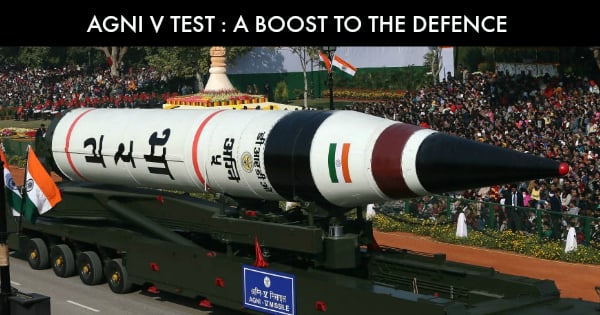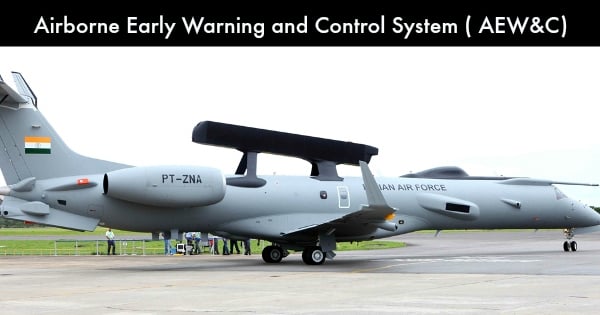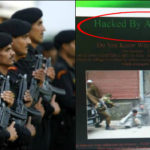The backbone of any armed force of a country is the research and development agency behind it. In India, the premier R&D agency for the Indian Armed Forces is the Defence Research and Developments Organisation or the DRDO which has proved its mettle in 2016 by creating world class technology and carrying out similar tests. Some of these are the following 26:
- Agni – V Successfully Test-Fired: Agni-V, the Long-Range Surface-to-Surface Ballistic Missile was successfully flight tested by DRDO on 26 December from Dr Abdul Kalam Island, Odisha. The full range test flight of the missile further boosted the indigenous missile capabilities and deterrence level of the country. All the Radars, tracking systems and Range Stations tracked and monitored the flight performance and all the Mission objectives were successfully met. This was the 4th test of Agni-V missile and the second one from a Canister on a Road Mobile Launcher.
AGNI 5 Test – A Boost to The Defence
- Light Combat Aircraft (LCA) ‘Tejas’: Indigenously developed LCA is an advanced technology, single seat, single engine, supersonic, lightweight, all-weather, multi-role, air superiority fighter designed for air-to-air, air-to-ground and air-to-sea combat roles. During the year, ‘Tejas’ made its international debut in January 2016 with participation in the Bahrain International Air Show. Hindustan Aeronautics Limited (HAL) handed over the first two Tejas aircraft to IAF at a ceremony at ASTE Bengaluru on 1 July 2016 which will make up the ‘Flying Daggers’ 45, the name of the first squadron of LCA.

- Airborne Early Warning and Control (AEW&C) System: The AEW&C system consists of sensors mounted on an aircraft, for locating and providing early warning of airborne and sea surface targets and hostile emissions. All the mission systems have been integrated on the first two aircraft and the developmental trials are in advanced stage of progression. The system integration on the third aircraft is in progress. The installation of the ground systems namely Mission Planning and Analysis Station (MIPAS), Operator Training Station (OTS) and Automatic Test equipment have been completed. Ground Exploitation System (GES) is being integrated with Integrated Air Command and Control Station (IACCS).
Airborne Early Warning and Control System ( AEW&C)
- Medium Altitude Long Endurance UAV ‘Rustom-II’: Rustom-II, a multi-mission Unmanned Aerial Vehicle (UAV) is being developed to carry out the intelligence, surveillance and reconnaissance (ISR) roles for the three Armed Forces with an endurance of 24 hours. During the year, taxi trials commenced from 8 August. DRDO also successfully carried out the maiden flight of Rustom-II from Aeronautical Test Range (ATR), Chitradurga in November.
MALE Rustom-II
- Heavy Drop System (HDS): Enhancing the Army Special Forces’ capabilities to airdrop combat vehicles and heavy equipment, DRDO has developed a heavy system which can drop loads up to 16 tonnes from the IL-76 transport aircraft using parachutes. These parachutes reduce the descent rate to desired speed at touchdown. On impact with the ground, parachutes are released by automatic disengage unit (ADU) to avoid dragging and toppling of load due to high-speed winds.
- Controlled Aerial Delivery System (CADS): Airdrop technology is a vital capability for rapid deployment of payloads to specific rendezvous points. CADS with its Air Borne Unit (ABU) steers its flight path towardsa predetermined target by operating the control lanyards of Ram Air Parachutes (RAP). CADS for 500 kg All Up Weight (AUW) has been successfully developed by DRDO.
- Surface-to-Air Missile ‘Akash’: The medium range surface-to-air missile ‘Akash’ has been developed and inducted into IAF and Indian Army. During the year, Akash Army version,user exercise was carried out. The total production orders placed by Services for eight squadrons of IAF and two regiments of Indian Army for Anti-Missile System amounts to approximatelyRs. 23,900 crore. Indigenous development of the system has given impetus to the Defence industrial base in the country. DRDO has also undertaken two new projects of Akash this year.
- Long Range Surface-to-Air Missile (LRSAM): LRSAM is a joint development programme of DRDO, Indian Navy and Israel Aerospace Industries (IAI), Israel. The missiles are intended to equip three guided missile destroyers of the Indian Navy. LRSAM Home-on-Tests were conducted at ITR during September to prove three intercept scenarios with Banshee Jet 80 as target.
- Medium Range Surface-to-Air Missile (MRSAM): MRSAM is being developed for the IAF for protecting our territory and ground forces from air attacks by intercepting aerial targets like fighter aircraft and guided weapons. The system is jointly developed by DRDO, IAF and IAI, Israel. During the year, three flight trials were successfully carried out in June andJuly to evaluate target detection and tracking by Long Range Detection and Tracking Radar (LBMFSTAR), missile launch and homing on target and radar tracking and ASP generation.
-
Anti-Tank Missile ‘PROSPINA’: ‘Nag’ is a third generation anti-tank missile (ATM) with ‘Fire & Forget’ and ‘Top Attack’ capabilities, which can be used in day and night. It is deployed on a specially modified Infantry Combat Vehicle (ICV) BMP-2 vehicle ‘NAMICA’. During the year, guided flight tests of ‘Nag’ were carried out with the objective of demonstrating range capabilities of IIR Seeker during worst time of the day in summer environment.
- New Generation Anti-Radiation Missile (NGARM): DRDO is involved in the design and development of NGARM. AKU-58 launcher after suitable modification will be used for missile integration on Su-30 MKI aircraft. During the year, captive flight trials (CFT-1) sorties were carried out at AF Station, Pune with Su-30 MKI aircraft.
- Smart Anti Air Field Weapon (SAAW): SAAW is a long-range, stand-off, precision air-to-surface weapon capable of engaging ground targets for launch from Jaguar and Su-30 MKI aircraft. During the year, mechanical, electrical and avionics integration of SAAW to Jaguar CLPwere successfully completed and communication between SAAWOBC and Jaguar MC was established. On 24th December, DRDO successfully tested this indigenously designed and developed 120 Kg class smart weapon from an IAF aircraft. It is capable of engaging ground targets with high precision up to a range of 100 kms.
-
Advanced Towed Artillery Gun System (ATAGS): DRDO has taken up the task of design and development of 155mm X 52 calibre ATAGS having higher calibre, range, accuracy and consistency for the Artillery of Indian Army. The gun system will be compatible to ACCCS-Shakti command and control network being operational with the Indian Army.
- New Family of Munitions: Six types of munitions are being designed and developed by DRDO viz. Soft Target Blast Munition ‘Nipun’, Anti-Tank Point Attack Munition ‘Vibhav’, Anti-Tank Bar Munition ‘Vishal’, Directional Fragmentation Munition ‘Parth’, Anti-Tank Munition ‘Prachand’ and Jumping Fragmentation Munition ‘Ulka’ to improve the existing munitions and enhance its performance. During the year, Phase-I & Phase-II user trials of ‘Nipun’ were completed.
- Penetration-cum-Blast (PCB) and Thermo-baric (TB) Ammunition for 120 mm Arjun Tank: PCB ammunition has been designed to defeat LOC bunkers, light concrete structures, administrative buildings, field fortifications and machine gun posts. The TB ammunition is being designed to defeat light vehicles, infantry formations, etc. Test firing of 120mm PCB & TB tank ammunition specifically designed for ‘Arjun’ tank was carried out in January at PXE, Chandipur in association with active involvement of the Army.
- Advance Light Towed Array Sonar (ALTAS): ALTAS is an efficient sensing system for detection, localization and classification of submarines operating especially in below layer ocean conditions. It is useful in anti-submarine warfare operations and is the apt sensor for warships to locate silent submarines capable of launching high speed torpedoes. During the year, technical trials were conducted wherein detection of dived submarine in active and passive modes was established. High speed towing at 16 knots was also demonstrated successfully.
-
Hull Mounted Sonar Advanced (HUMSA) Upgrade: This system was installed onboard INS Talwar in August 2014 and three technical trials were conducted. UETs were conducted in Apr 2015 and more than 80% of NSQR parameters were demonstrated. Since INS Talwar was slated for midlife upgrade, the sonar system was re-installed in INS Trishul. During April, user evaluation trials were held onboard INS Trishul followed by handing over of the SONAR system by the Defence Minister to the Indian Navy in November.
- Portable Diver Detection Sonar (PDDS): DRDO has taken up a new TD project in 2016 to design and develop a PDDS system that is capable of detecting small targets such as divers and diver delivery vehicles in and around harbours. The system will be deployable and retrievable as and when required. During the year, lab prototype was fabricated and trials conducted at VARI, Kulamavn in January. Installation and testing of developed system on board INS Sagardhwani was completed in March. CDR was completed in July.
- EW Systems ‘Samudrika’ for Capital Ships, Aircraft and Helicopters for Indian Navy: DRDO has taken up the development of a family of seven EW systems. The ship-borne systems include EW Suite ‘Shakti’, COMINT ‘Nayan’ and ESM ‘Tushar’. The air-borne systems include COMINT ‘Sarvadhari’, ESM ‘Sarang’ and ‘Sarakshi’ and ESMandCOMINT ‘Nikash’. Design of each of the above mentioned products has been completed and hardware is under realization. M/s BEL will be the prime production agency for the production of EW systems.
-
Internal EW System for MiG-29 Upgrade Aircraft (D-29 System):D-29 is an integrated EW system for warning and jamming that encompasses RWR, ECM, and ESM functions and utilizes state-of-the-art active phased arrays for selectively jamming multiple threat radars. The system detects and gives information about position of the RF sources illuminating the aircraft and applies the appropriate jamming technique. During the year, 26 sorties were completed for multi emitter trials. New software of Elisra was tested on the rig and loaded on the aircraft.
-
Digital Radar Warning Receiver (DR-118): DR118 is a new generation Radar Warning Receiver (RWR) designed and developed for installation on any fighter, transport aircraft or helicopter. It intercepts and identifies airborne, ship-borne and ground based acquisition, target tracking and missile guidance radars up to the J Band frequencies. The identified emitters (radars) are indicated to the aircrew by displaying corresponding set of symbols on the corresponding MFD page in the cockpits. A synthesized audio warning is provided to the aircrew at the birth of each emitter. During the year, first milestone of hardware and software integration was achieved. This was followed by partial acceptance test procedure which was carried out jointly with IAF and high temperature antenna trials at Bareilly.
-
Dual Colour Missile Approach Warning System (DCMAWS) for fighter aircraft (Su-30 MKI): DCMAWS provides warning to the pilot on detecting a missile threat on the aircraft. Upon the declaration of the threat, the system provides audio visual display to the pilot and activates the counter measure dispensing system through onboard MC. The DCMAWS is a passive missile approach warning system that utilizes two spectral bands in the mid band IR. The system is being jointly developed with M/s Elisra, Israel and MoD, Israel. System development is completed.
- S-Band Hub and Ground SATCOM Terminals: DRDO has realized three types of Terminal hardware namely,ManpackSatcom Terminal (MST), Satcom Messaging Terminal (SMT) and Handheld Satcom Terminal (HST). The fourthtype,SatcomOn The Move (SOTM) Terminal has been developed by DRDO with BEL as production partner.
- Border Surveillance System (BOSS): DRDO is involved in design and development of a border surveillance system comprising EO payload consisting of thermal and day camera, LRF, GPS and DMC and BFSR (XR) for day/night monitoring of border area to ease man patrolling by automatically detecting an intrusion. During the year, two units of BOSS have been realized and installed in Lehand the Ladakh region. Performance has been demonstrated to GOC and Corps Commander HQ.
- Indigenization of Microwave Chaff for Defence Application: Chaff is one of the most widely used and effective expendable electronic countermeasure devices. The project aims at indigenous development of chaff cartridges to bridge the technology gap in the field of chaff cartridges development. An indigenous process of preparing very fine aluminiumfibres has been developed and a small capacity pilot plant has been established. During the year, Limited Qualification Tests (LQT) for indigenously developed chaff cartridges were carried out in presence of representatives from RCMA (AA), Pune.
- Bullet Proof Jacket: DRDO is involved in the development of the prototype bullet proof jacket (BPJ), as per GSQR using different state- of-the-art ballistic materials providing protection against AK47 (MSC and HSC), 7.62 SLR and 9 mm SMC ammunitions. A total of 150 BPJs will be provided for user trials.
















